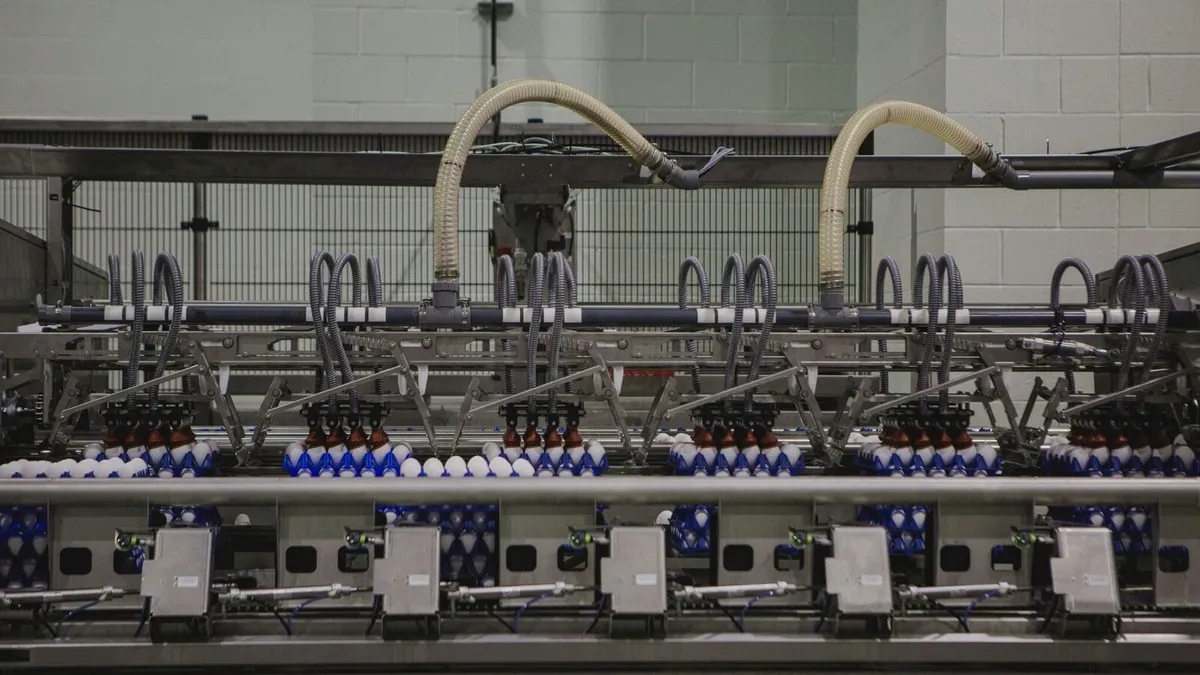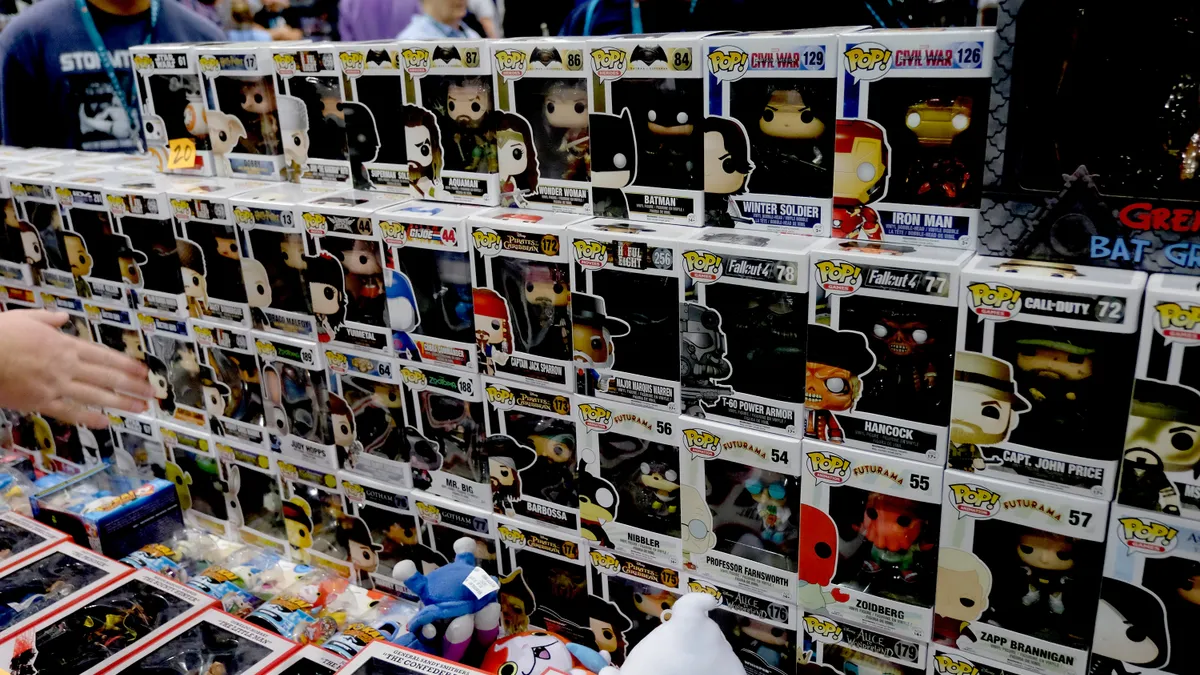Romaine lettuce, airbags, antibiotics, dog food. Nearly every industry at some point faces product recalls, which seemingly are in the news almost daily and can be catastrophic — financially or in human lives.
According to a report from Kiplinger, the total cost of the Top 10 recalls is $73.8 billion, beginning with the 1982 Tylenol poisoning, which resulted in seven deaths, to the ongoing Takata airbag recall. Of the 10 listed by Kiplinger, half are in automotive, three in pharmaceuticals, one in food and one in technology.
The 10 biggest product recalls
| Rank | Recall | Cost (as of March 2018) |
|---|---|---|
| 10 | Tylenol | $100M |
| 9 | Peanut Corp. of America | $1B |
| 8 | Toyota Floor Mats | $3.2B |
| 7 | Pfizer's Bextra | $3.3B |
| 6 | General Motors Ignition Switches | $4.1B |
| 5 | Samsung Galaxy Note 7 | $5.3B |
| 4 | Firestone Tires and Ford | $5.6B |
| 3 | Merck's Vioxx | $8.9B |
| 2 | Volkswagen Diesel Engines | $18.3B |
| 1 | Takata Air Bags | $24B (and counting) |
Source: Kiplinger
"When we think traditional recalls, we’re thinking of items at the consumer or the last step before the consumer, but it can be anywhere," Dale Rogers, Professor of Logistics and Supply Chain Management at the W.P. Carey School of Business at Arizona State University, told Supply Chain Dive. For this reason, recalls are a major concern for supply chain managers.
Recalls are split about evenly between voluntary and mandatory, Rogers said.
"There are a lot of reasons, but typically they’re some sort of liability [issues]," he said. "Some are mandated by a consumer product agency or the FDA (Food & Drug Administration). When it’s voluntary, a company says, 'we better do this,' and, when you think about it, it’s really every day because of product lifecycles."
The supply chain touchpoints for recalls
Faulty parts generally occur in two places along the supply chain: Either the product’s original equipment manufacturer (OEM) or at the facility that assembles the product, John Giangrande, Director of Sales who heads up the automotive aftermarket vertical at Fortna, told Supply Chain Dive.
"First and foremost, it’s at the manufacturing point," Giangrande said.
The Takata airbag recall is a prime example. It affected 19 different automakers and 37 million vehicles in what the National Highway Traffic Safety Administration (NHTSA) called the largest and most complex safety recall in U.S. history, as reported by Consumer Reports. In brief, the propellant that triggers the airbag’s metal inflators was weakened by moisture and could rupture, sending metal shards throughout the car. As of July 2018, the most recent available statistics, the faulty airbags had killed 15 in the United States and 23 globally.
"When we think traditional recalls, we’re thinking of items at the consumer or the last step before the consumer, but it can be anywhere."

Dale Rogers
Professor of Logistics and Supply Chain Management, W.P. Carey School of Business at Arizona State University
"Takata oversees the airbags and makes them for new vehicles. At the same time, those parts are available to the aftermarket, including dealerships," Giangrande said
When an automotive recall occurs, it puts a burden not just on dealerships, but also on aftermarket companies like NAPA, Advance Auto Parts and Pep Boys.
"They have to identify those customers — people who do their own repairs on orders cars — who bought those parts and absorb the costs," he added. "The responsibility goes to whoever the part is coming from or where it was bought."
Expect the unexpected
The burden and cost of unexpected disruption to the supply chain doesn’t necessarily happen only to the "big guys," Gary Barraco, Director of Global Product Marketing at Amber Road, told Supply Chain Dive, citing a company that screen prints T-shirts and sweatshirts.
"They got a call from the Consumer Product Safety Commission (CPSC)," he said. "[The agency] went into a store and, using a gun that can detect lead in spray paint, zapped the shirts and a number registered as 'hot.' They were pulled off the shelves. The manufacturer went back to his factory in China. They told him they were almost done with the run but ran out of paint for the last couple hundred. It was last minute, at deadline. They ran to a friend’s plant for backup paint and finished up the run."
"Everything that happens upstream goes downstream. Polluted water upstream is going to spoil what it reaches downstream."

Gary Barraco
Director of Global Product Marketing, Amber Road
Those were the shirts that came up "hot" during the CPSC inspection. The entire inventory was pulled, not just those that were discovered in that store. The onus was on the manufacturer to prove to CPSC that it was only a small batch, which it eventually did, but not without cost and aggravation.
"Traceability is near and dear to my heart," Barraco said. "Everything that happens upstream goes downstream. Polluted water upstream is going to spoil what it reaches downstream."
As with so many supply chain issues, technology can help, said Arizona State’s Rogers. When it comes to pharma or food, it’s especially important.
"Internet of Things (IoT) sensors can see where the product is and if it’s outside of the required temperature range. I think in the next few years we’ll see product damage on transportation reduced through better sensing. Intel, for example, has really developed a lot of technology around sensors tracking items through the supply chain."
Have a plan, and execute
If you’re the supply chain manager, are you part of the prevention or part of the cure, Giangrande said. "If it’s prevention, vet your suppliers and make sure they’re ISO (International Organization for Standardization) certified, do quality assurance and enforce safety standards. If you’re part of the cure, share responsibility, have recall insurance for your organization, be able to track the products."
Documentation, of course, is vital, Amber Road’s Barraco noted. "You need the purchase order and supplier information, serial codes and lot numbers in one consolidated platform. Who can drill down to where it happened? It’s imperative for manufacturers to test all components, then document everything related to the product. You really have to keep a finger on the pulse."
Despite a supply chain manager’s best efforts, recalls will occur — it’s just part of the business. Barraco offers a few key steps to a solid plan:
- Notify the customer and have a process for them to destroy or return the product.
- Fix the production so anything else coming down the pike isn’t affected.
- Retool the whole operation, whether it’s for a design flaw or replacing a part.
- Redo the entire inventory. What’s in stock? What isn’t?
"Diligence," Barraco said, "is key."





















